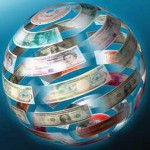
With the increasing forces of globalisation the need for trade regulation in an unbiased and objective manner increases. This role has been assumed by World Trade Organisation (WTO) and its functions include administration of trade agreements, serving as a forum for trade negotiations, dealing with trade disputes between its members, and monitoring policies of its members related to trade. Established in January 1, 1995, WTO comprises 159 members and it is based in Geneva, Switzerland (Annual Report, 2013). There are contradicting assessments of WTO performance in terms of regulating trade between counties in an effective manner. You can read more scope, contribution and criticism related to WTO here. On one hand, WTO has been praised for such positive impacts as stimulating economic growth and increasing the level of employment, encouraging good governance practices, contributing to peace and stability and settling trade disputes amongst its members (Ahern and Fergusson, 2010). On the other hand, WTO critics argue that the organisation has made a counter-productive impact on development of a range of its members, and it also has been blamed for neglecting environmental issues. Moreover, WTO has been criticised on the grounds of political bias for serving as an instrument at the hands of its few hegemonic members. Moreover, there are other international organisations which are parts of United Nations Organisations (UN) such as World Bank, and International Monetary Fund (IMF), that have certain impacts in international trade practices. UN in general, and its Economic and Social Council in particular can be specified as another international organisation that does have impact on trade regulation between countries. Comprising 54 members for three-year terms, the Economic and Social Council aims to promote international cooperation in order to achieve economic and social development. Millennium Development Goals is one of the most noteworthy economic initiatives proposed…
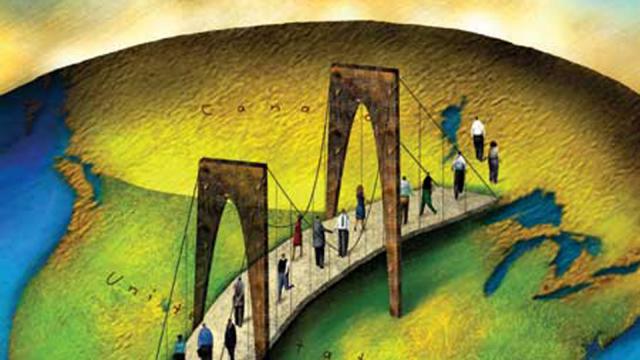
In line with the advantages of free trade discussed here, there is a set of objections to free and these objections can be represented through the following four points. Firstly, free trade is criticised due to its perceived disadvantages to local producers. The concept of free trade promotes open competition without barriers in the global scale. Thus, companies from abroad with strong competitive edge may present serious threat to the levels of revenues of local businesses. However, this threat can be used as a positive factor as well, in terms of motivating local producers to innovate and search for additional sources of competitive edge in creative ways. From this perspective, local producers need to be assisted by government through building effective infrastructure for competition rather than being protected from foreign competitors limiting their motivation to innovate. Secondly, free trade is blamed for causing trade deficits with detrimental impacts on national economy. Specifically, trade deficit is an absence of balance between imports and exports and reducing the levels of trade deficits is one the main macroeconomic goals of the government. Trade deficit between US and China has been estimated to be as much as USD 40.6 billion (Crutsinger, 2014, online), and a range of economists point to this number as one of the main reasons for severe economic issues in the US. At the same time, counter-argument can be formulated in a way that “a growing trade deficit, despite its misleading name, is a good for the economy. It is typically a signal that global investors are confident in America’s future” (Boudreaux, 2014, online). In other words, there is a positive correlation between trade deficit and the levels of investment in the national economy from abroad, and these investments have great potential to revive national economy. Thirdly, free trade is criticised for…
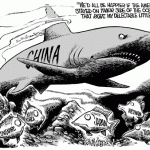
Free trade can be defined as “a policy by which a government does not discriminate against imports or interfere with exports by applying tariffs (to imports) or subsidies (to exports)” (Britannica, 2014, online). In simple terms, free trade can be explained as an absence of government intervention to the practices of selling to and buying from another country. Promoted by famous economist Adam Smith and David Ricardo, perceived advantages of free trade include benefits to be gained from specialisation practices engaged by countries according to their competitive advantages. This benefit based on theoretical frameworks of absolute advantage and comparative advantage. Specifically, according to the theory of absolute advantage proposed by Smith (1976), countries are perceived to have absolute advantage in producing a product if the production is facilitated in the most efficient way than other countries. Comparative advantage proposed by Ricardo (1817), on the other hand, refers to “the ability to produce a specific product more efficiently than any other product” (Pride et al., 2011, p.70). According to theories of absolute advantage and comparative advantage focus on manufacturing products that can be produced more efficiently than other countries and trading these products for other products with different countries generates more economic gain and value compared to attempts to diversify production within a single country. A basic classical example of trade of two products between two countries found in the most economics textbooks illustrate the advantage of free trade in the most effective manner. Moreover, free trade encourages competition in the market, motivating local producers to find and utilise sources for competitive edge on a constant basis, and high level of competition in the market offers benefits to consumers in terms of more variety of products and services, higher quality, and competitive prices. Another advantage of free trade can be specified…
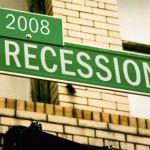
Explanation of the outbreak of the Great Recession of 2007-8 in a chronological order is necessary in order to provide detailed information about the case study, and link discussions and analysis in following chapters to specific events within the chronology. Date Event 2007 AugustOctober December Funds freezed by the US Federal ReserveRecord high at Dow Jones Official start of the recession in the US 2008 MarchJuly September October November Collapse of Bear SternsGDP fall of 0.6% confirmed Denmark as the first European economy to face recession Record unemployment rate in the US during the last 5 years Takeover of Fannie Mae and Freddie Mac US President George Bush signs USD 700 billion bailout fund Singapore is the first Asian country to face recession with the economy shrinking 6.3% Hong Kong confirmed as the 2nd Asian country to face recession 2009 JanuaryFebruary June GDP fall of 1.5% in 4thquarter of 2008, confirms the beginning of recession in the UKObama stimulus package signed Issue of Greece’s budget deficit emerge 2010 JanuaryApril October UK economy comes out of recession with a GDP growth of 0.1%Creation of 162,000 job in the UK Greece and Ireland are bailed out in the EU as a result of adoption of austerity measures 2011 April May Portugal asking for the EU help in dealing with its financesPlanning of a permanent rescue fund in EU by leaders of its members The loss of US AAA credit rating Approval of EURO 78 billion bailout for Portugal by EU leaders Chronology of the Great Recession of 2007-8 Source: Roberts (2009), Heng (2010) and Hetzel (2012) References Heng, M.S. (2010) The Great Recession: History, Ideology, Hubris and Nemesis, World Scientific Hetzel, R.L. (2012) The Great Recession: Market Failure or Policy Failure, Cambridge University Press Roberts ,M. (2009) The…

While there is a consensus amongst authors regarding rapid hegemonic rise of China opinions divide about sustainability of this tendency in long-term or even medium term perspectives. On one hand, there are authors such as Zhang (2012), Sobel (2012) and Joseph (2013) who express firm belief about the sustainability of Chinese hegemony. This group of authors refer to the strong competitive advantage of economy of China that is expanding beyond the cost advantage of resources to compete with producers from developed countries on quality levels. On the other hand, a range of authors such as Catley and Mosler (2007), Balogun (2011) and Nye (2011) adopt a sceptical approach about sustainability of hegemony of China in long-term perspectives. This specific group of authors justify their stand by stating that China’s hegemonic rise is directly conditioned by its volume of exports, and sustainability of volume of export depend on a wide range of internal and external factors that are becoming increasingly volatile. Nevertheless, the literature review has found a set of political, economical and social factors that contribute to the rise on the level of hegemony of China. Each of these factors is discussed below in greater details. Political Factors Political factors contributing to the rise of China’s hegemony are closely associated with damages to the reputation of present world hegemon – the USA through unsuccessful engagement in a series of foreign wars (Catley and Mosley, 2007, Zhang, 2012, Joseph, 2013) and a range other factors discussed below. Zhang (2012) argues that financing overseas wars in Iraq, Afghanistan, and Libya is draining national economy of the USA. Moreover, eagerness of the US President Barack Obama to initiate military engagements in Syria is most likely to have highly detrimental impacts on the level of national economy. Moreover, US government sponsors a range…

According to Nye (2011) wars and military conflicts between countries are never going to cease in the future because confrontionism is deeply rooted in human genes. Generally, the debate regarding hegemony can be divided into two broad and opposing categories. On one hand, supporters of Habermas such as Catley and Mosler (2007), Russett (2011) and Baker (2011) do believe that it is possible for countries to engage in international relations without dominant power in an effective manner. On the other hand, supporters of Foucault such as Schake (2009), Balogun (2011), and Nye (2011) argue that international relations cannot be facilitated without power, but the nature of power can be represented in various formats. In other words, according to this stance hegemonic power will always influence international relations; however, the level of evidence of this influence varies according to a range of factors. Lee (2010), Russett (2011) and Baker (2011) find positive correlation between rising military power of a state and its hegemonic ambitions. Table 2.1 illustrates major hegemonic wars during the last several centuries and contains information about their results. Hegemonic War Duration Results Thirty Years’ War 1618 – 1648 Defeat of Habsburg Wars of Louis XIV 1667 – 1713 Defeat of France Napoleonic Wars 1792 – 1814 Defeat of France; Emergence of Britain as hegemon World War I 1914 – 1918 Defeat of Germany World War II 1939 – 1945 Defeat of Germany; Emergence of the USA as hegemon Table 2 Hegemonic wars during last several centuries and their results Source: Lee (2010) US Hegemony in the 20th Century and Its Perception by other Countries According to Catley and Mosler (2007) the US hegemony has mainly started after the World War II of 1939 – 1945. Specifically, Catley and Mosler (2007) link this fact to the chosen stance of…

Initially introduced by Ogranski in 1968, and further developed by Ogranski and Kugler (1980), the framework of Ogranski and Kugler’s Power Transition is based on the assumption that international order is hierarchically structured. According to this framework there are countries that are satisfied with their position in a hierarchical structure of the world order, at the same time when certain countries are not satisfied. Accordingly, Ogranski and Kugler’s Power Transition theory states that counties that are not satisfied with their positions in hierarchical structure of international order may develop hegemonic ambitions and initiate international conflicts. Moreover, Ogranski and Kugler (1980) divide the process power transition into the following three stages: The stage of potential power. This stage is associated with gaining access to reserves and competitive advantages, and increase in the level of their utilisation to fuel economic growth in the country. Nowadays, countries such as Indinesia and Singapore can be specified to be in the stage of potential power. The transitional stage is marked with the utilisation of newly gained sources of competitive advantage in an active and extensive manner to become a hegemonic state. China and India can be specified to be on transitional stage to hegemony. Power maturity is the stage where hegemonic decline is highly probable due to a range of reasons that primarily relate to the loss of competitive advantage in the global marketplace. The USA and the UK can be mentioned to illustrate the instances of power maturity.
By John Dudovskiy
Category: Politics
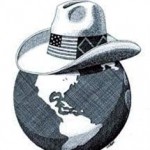
The theory of hegemonic stability relies on multiple perspectives such as liberal, historical and structural (Sobel, 2012). According to hegemonic theory high level of openness and stability of international system can be maintained when there is a single hegemonic country that meets the following requirements: a) Hegemonic country must possess sufficient amount of resources in order to allow the country to engage in leadership; b) Hegemonic country must be enthusiastic in terms of pursuing policies that pursuing policies needed to create and maintain free economy. Hegemonic models are divided into three different categories by Joseph (2013) in the following manner: Benevolent hegemon. For this type of hegemon common interests prevail over self-interest of a hegemonic state. Moreover, benevolent hegemonic model is closely associated with absolute advantages of countries. According to Joseph (2013) individuals who believe in liberal values consider hegemon to be benevolent in most cases Mixed motives and strategies hegemon. Involving both, absolute and relative advantages, mixed hegemon pursues common and personal benefits in a simultaneous manner. Joseph (2013) specifies mixed hegemon as the most common model of hegemonic states. Exploitative hegemon is perceived to be based purely on self-interest of hegemonic states and may involve the use of coercion to enforce compliance with the wills of hegemonic states. There is a consensus amongst authors about highly negative effects of the model of exploitative hegemon to other countries. References Joseph, J. (2013) Hegemony: A Realist Analysis, Routledge Sobel, A.C. (2012) Birth of Hegemony: Crisis, Financial Revolution, and Emerging Global Networks, University of Chicago Press
By John Dudovskiy
Category: Politics
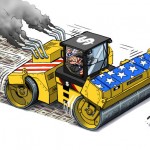
Literature review has found a debate about the impacts of hegemony to an open economic system. On one hand, authors such as Catley and Mosler (2007), Russett (2011) and Baker (2011) confirm positive role of hegemonic states in achieving macroeconomic stability in global scale. The main justifications behind this stance relate to hegemon serving as role model for other states and playing an instrumental role in creation and facilitation of monetary and trade regimes. Supporters of this viewpoint offer various examples to justify their view. Specifically, these examples include positive implications of the British hegemony in the 19th century to trade liberalisation, and reductions on the level of free trade in the global scale after the decline in British hegemony 1875 onwards (Catley and Mosler, 2007). Moreover, Russett (2011) argues that absence of hegemonic state within the period between the two World Wars has resulted in intensification of economic protectionism in many countries, and the situation has escalated to give rise to the emergence of the Great Depression. Russett (2011) further argues that macroeconomic stability has been achieved in many countries only after the emergence of the US as a powerful hegemon upon the completion of the World War II. According to this approach, the role of hegemonic states in global macroeconomics can be represented through the following points (Baker, 2011). a) Maintaining stabilised macroeconomic situation; b) Enforcement of free economy rules though the use of influence; c) Encouraging other counties to eliminate barriers to international trade; d) Contributing to the growth of national economies of other countries through imports On the other hand, sceptical approach towards the benefits of hegemonic states to macroeconomic stability and international trade has been expressed by Schake (2009) and Nye (2011). According to this group of authors bargaining and cooperation between countries is more…
By John Dudovskiy
Category: Literature Review
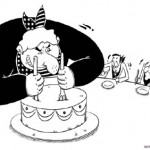
In simple terms hegemony can be defined as “the predominant influence, as of a state, region, or group, over another or others” (The Free Dictionary, 2014, online). Alternatively, hegemony can be defined as “the leadership by a single stronger partner of other less strong, but still autonomous partners, undertaken for the mutual benefit of all parties concerned” (Warner, 2006, p.3). Catley and Mosler (2007) specify power to play a significant role in terms of distinguishing between the notions of hegemony and colony. Specifically, according to Catley and Mosler (2007), the while the term of colony relates to direct use of power, hegemony is associated with indirect use of power. It can be further elaborated that direct power relates to intimidation in physical and psychological levels, whereas indirect power is exercised through legislature and tends to be latent (Schake, 2009). In its basic form Warner (2006) considers hegemony as a struggle for authority and closely associates hegemony with power. Moreover, the role of power in hegemony has been stressed by Schake (2009), Nye (2011) and Zhang (2012). Basically, authors refer to positive correlation between power of a country and the level of its hegemony. Nye (2011) introduces the idea of smart power and defines it as “the combination of the hard power of coercion and payment with the soft power of persuasion and attraction” (Nye, 2011, p.xiii). Schake (2009) stresses the importance of context of any particular situation when analysing the extent and use of power, and convincingly argues that analyses for the use of power should not be conducted without taking into account unique aspects of any given situation. The name of Antonio Gramsci has featured in every source of secondary data analysed during the literature review that addresses the topic of hegemony in an adequate levels of depth. Gramsci…
By John Dudovskiy
Category: Politics
